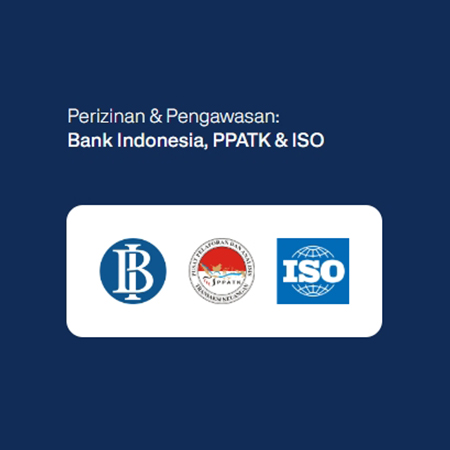
The Price Earnings Ratio or PER technique is one of the approaches used to calculate the fair price of shares. It is the simplest approach for beginners to determine what an acceptable price is.
It is better to compare PER with PER in related businesses to determine a reasonable price for shares. If a firm’s PER is higher than the average of a similar company, the stock price is regarded as expensive. Conversely, if the company’s PER is lower than the average of a similar company, the stock price is considered inexpensive.
To learn more about the Price Earnings Ratio in the world of stocks, the following article will explain the definition of PER, the formula, and how to calculate it.
Definition of Price Earnings Ratio
Price Earnings Ratios (P/E ratios) calculate how many times an ordinary share’s current market price has covered its Earnings Per Share (EPS). It is calculated by dividing an ordinary share’s current market price by its earnings per share.
The Price Earnings Ratio is a metric used to calculate the high cost of low-cost shares based on the company’s net profit. In summary, PER is used to forecast a stock’s price or to decide whether a stock is worth buying.
Furthermore, the Price Earnings Ratio is also mentioned. This is a ratio used to assess the rate of return on capital invested in a company. The lower a stock’s PER, the better. As a result, the PER ratio has an inversely proportional influence on the stock price.
A corporation with a high Price to Earnings Ratio has a high share price. The Price to Earnings Ratio gauges how much money investors are willing to pay to buy shares for every dollar of earnings earned. The profit or profit generated is commonly known as EPS as mentioned previously. The PER is a comparison of a company’s net profit to its share price.

Price Earnings Ratio Equation
The Price Earnings Ratio is calculated using a unique formula. In general, even a newbie can easily understand the formula. The appropriate PER value typically falls between 20 and 25 times the income or when paying out dividends. In the meantime, PER value between 15 and 18 is desirable, at which point even investors will have an upbeat view of the economy’s future.
In plain English, a PER of 15 would reflect that the company’s current market value is equivalent to 15 times its yearly earnings. If you were to buy 100 percent of the firm’s shares, it would take 15 years for the company’s continued income to cover your initial investment. This is assuming the company never grows again.
In general, the value of Price Earning Ratio related with market value per share and EPS. Therefore, the equation of PER similar with market value per share divided by EPS.
See Video How To Easily Send Money to 50+ Countries
Price Earnings Ratio Benefits
Investors use the Price Earnings Ratio to forecast a company’s ability to create profits in the future. The size or amount of PER does not always imply strong performance, because high PER might be created by average profit growth.
PER is important for estimating the predicted market value of companies and if they will be lucrative in the future. As a result, investors are extremely picky when it comes to selecting or purchasing stocks at the proper time.
The PER assists investors in determining if a company’s stock is overpriced or undervalued to its earnings. The ratio measures what the market is ready to pay for the company’s current operations as well as its potential growth. If a firm has a high PER, the market believes in its growth potential and is willing to overspend today based on future earnings.
Send Money Easily to Different Countries
How to Send Money to Hong kong
How to Send Money to China
How to Send Money to Malaysia
How to Send Money to Japan
Limitation of PER
The Price Earnings ratio has some limitations that investors should be aware of, just like any other fundamental designed to help investors decide whether or not a stock is worth buying. This is important to remember because investors are frequently led to believe that there is one single metric that will provide complete insight into an investment decision, which is rarely the case.
Calculating a company’s PER might be difficult for unprofitable businesses that have no earnings. The best way to handle this is up for debate. The majority just claim that the PER doesn’t exist or is uninterpretable until a company becomes profitable for purposes of comparison. Some claim there is a negative PER, while others assign a PER of 0 or zero.
Download Transfez App
Transfez App can help you transfer money abroad more quickly and efficiently. Transfez Business can also help your business in making transactions abroad. For those of you who want to send money to relatives who are abroad because they are studying, working, or traveling, Transfez will be ready to help. This app is available on Android as well as iOS.
Closing and Conclusion
The Price Earning Ratio is just one of the metrics that analysts carefully examine to lower the likelihood of erroneous information. The corporation would have to put in a lot of effort to make sure that all measures were modified in a consistent manner, which is tough to do if they wanted to purposefully modify the figures to look better and fool investors. That’s why, although it’s not the only one, the PER remains one of the most frequently cited pieces of information when examining a firm.
With the information above, at least it helps to describe how much important the Price Earnings Ratio is. Furthermore, it helps the company to pay more attention to the value. So that it can help to keep a healthy company with good profit as expected.











